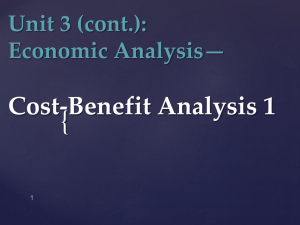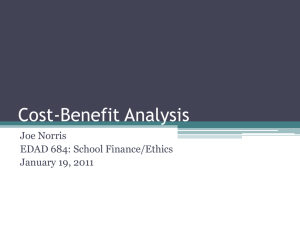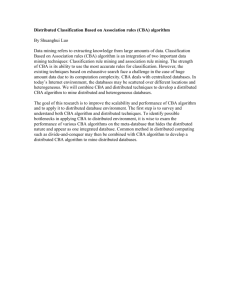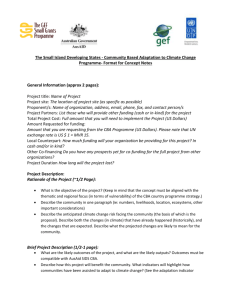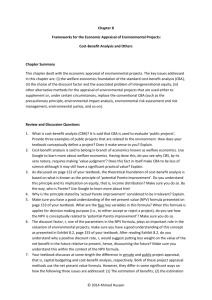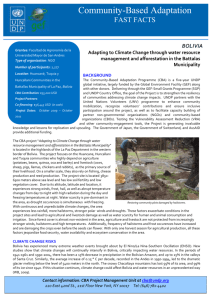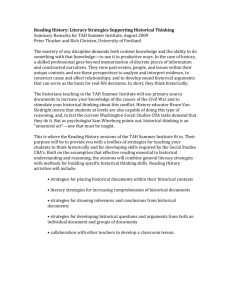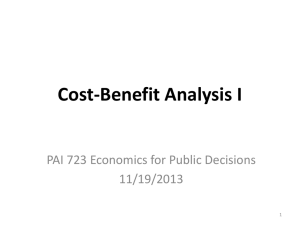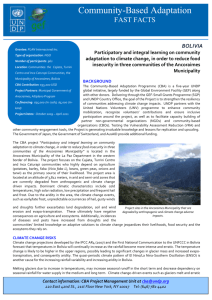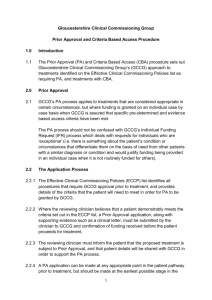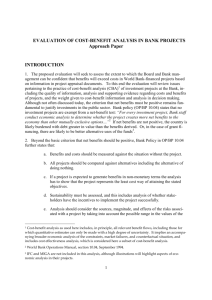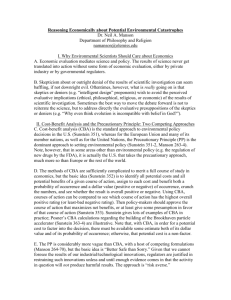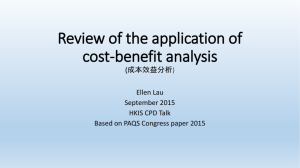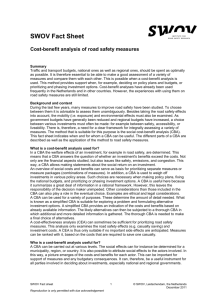Do Cost-Benefit Analyses Influence Transport Investment
advertisement
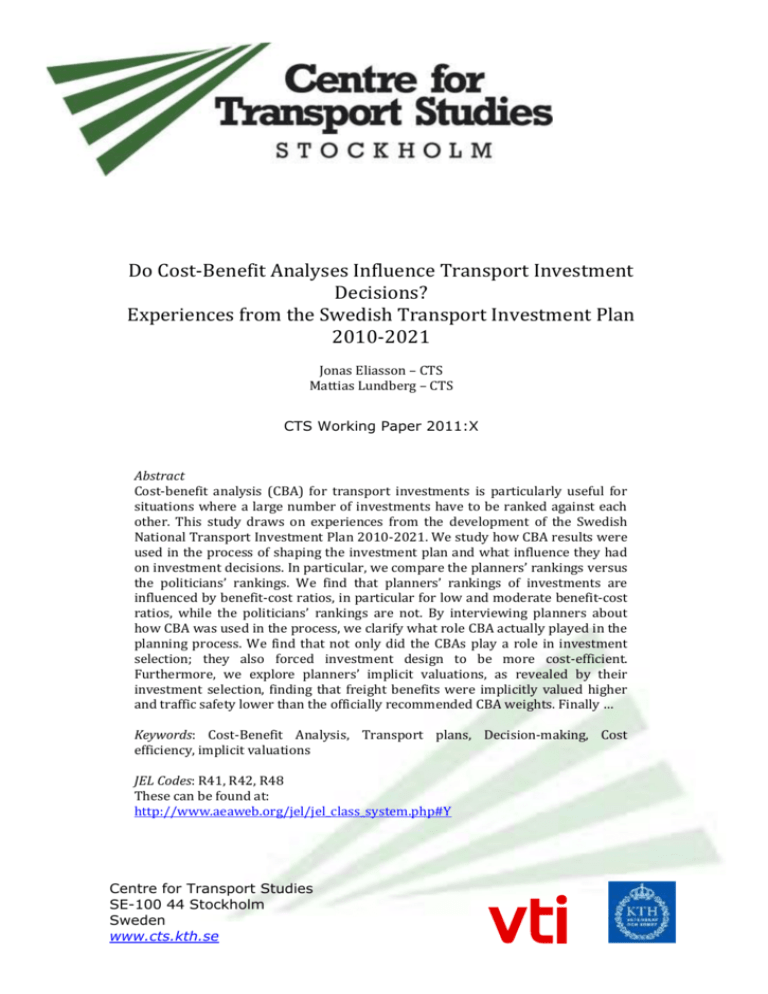
Do Cost-Benefit Analyses Influence Transport Investment Decisions? Experiences from the Swedish Transport Investment Plan 2010-2021 Jonas Eliasson – CTS Mattias Lundberg – CTS CTS Working Paper 2011:X Abstract Cost-benefit analysis (CBA) for transport investments is particularly useful for situations where a large number of investments have to be ranked against each other. This study draws on experiences from the development of the Swedish National Transport Investment Plan 2010-2021. We study how CBA results were used in the process of shaping the investment plan and what influence they had on investment decisions. In particular, we compare the planners’ rankings versus the politicians’ rankings. We find that planners’ rankings of investments are influenced by benefit-cost ratios, in particular for low and moderate benefit-cost ratios, while the politicians’ rankings are not. By interviewing planners about how CBA was used in the process, we clarify what role CBA actually played in the planning process. We find that not only did the CBAs play a role in investment selection; they also forced investment design to be more cost-efficient. Furthermore, we explore planners’ implicit valuations, as revealed by their investment selection, finding that freight benefits were implicitly valued higher and traffic safety lower than the officially recommended CBA weights. Finally … Keywords: Cost-Benefit Analysis, Transport plans, Decision-making, Cost efficiency, implicit valuations JEL Codes: R41, R42, R48 These can be found at: http://www.aeaweb.org/jel/jel_class_system.php#Y Centre for Transport Studies SE-100 44 Stockholm Sweden www.cts.kth.se Do Cost-Benefit Analyses Influence Transport Investment Decisions? 1 INTRODUCTION Cost-benefit analysis (CBA) has been an important tool for transport planners for several decades, in particular for evaluating and ranking transport investments. While CBA is also an important and useful tool for evaluating transport policy measures (and indeed should probably be used even more for this than currently), it is for transport investments that CBA is routinely and widely used and where the methodology is most developed. While CBA is useful and enlightening for evaluating a single investment, CBA really comes into its own when the relative merits of many alternative investments are compared against each other. An extreme example of such a situation is the construction of a national transport investment plan. During such a process, planners need to quickly sift through several hundreds of proposed investments, evaluating and ranking them relative to each other. The sheer number of investments makes standardized and semi-automatic evaluation tools such as CBA virtually indispensable. 2 METHOD Text … 2.1 Heading level 2 … More text … Heading level 3 (if needed) Text … 2


